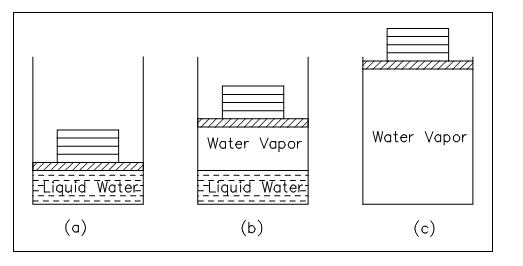Fusion
Consider one experiment with the piston-cylinder arrangement of figure as shown below. Assume the cylinder have 1 lbm of ice at 0°F, 14.7 psia. Whenever heat is transferred to the ice, the pressure stays constant, the specific volume rises slightly, and the temperature rises until it reaches 32°F, at that point the ice melts whereas the temperature stays constant. In this state the ice is termed as saturated solid. For many substances, the specific volume rises during this melting process, though for water the specific volume of the liquid is less than the specific volume of the solid. This causes ice to float on water. Whenever all the ice is melted, any further heat transfer causes a rise in temperature of the liquid. The procedure of melting is also termed to as fusion. The heat further added to melt ice into a liquid is termed as the latent heat of fusion.

Figure: Piston-cylinder Arrangement